Costume Party: Pam Grier!
Costume Party is a monthly column exploring fashion, personal style, and historical aesthetics in film.
Pam Grier will always be known as one of the most intriguing babes of the 1970s, a woman who brought attitude and intrigue to otherwise flimsy exploitation films. The genre of Blaxploitation, showcased in Anthology Film Archives’ current American International Pictures series, is certainly not without problems: the films, often directed by and for white men besotted with clichés of badass black womanhood, rely on a steady stream of violence and gratuitous female nudity, and often approach absurdity. Coffy (1973), Foxy Brown (1974), and Black Mama, White Mama (1973), the three films in the Anthology series, all trade on Grier’s (admittedly superlative) body. In all three films, she is never far from sex work. Coffy and Foxy Brown are essentially the same films in slightly different settings, with slightly different incidental characters, and in both she is made to go undercover as a prostitute. In Black Mama, White Mama, a Blaxploitation/women in prison cult genre mélange, Grier is a former prostitute who escapes prison while chained to a white woman. Given the prevalence of trenchcoat sleaze cinema in the 1970s, it’s safe to say that few if any people were watching these films for the clothes. Make no mistake, though, Pam Grier is undoubtedly one of the decade’s most stylish women, and the array of outfits displayed here only look better with the passing of time.
Coffy’s narrative is one of revenge, as Grier seeks to bring down the drug dealers who got her kid sister addicted. Early in the film is a somber occasion: Grier goes to the halfway house to see her sister (who is then never seen again, calling attention to the narrative slightness). Grier wears one of her more sensible, less outré ensembles, a pantsuit with a patterned jacket in shades of brown. It’s clear that most moviegoers of the time would have little interest in seeing sensible outfits for long, as the most iconic images of Grier feature low necklines and formfitting silhouettes.
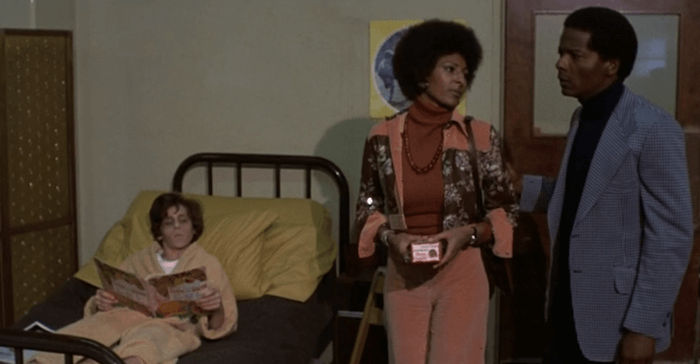 Grier often wears brown outfits, likely to call attention to her blackness (which by definition of Blaxploitation, is always presented as something of a novelty) while keeping up with the trends of burnt sienna shades that were then ubiquitous. In Foxy Brown, she wears brown suede overalls with a complementary pointy collared blouse. Pointy collars are everywhere in these films, on men and women. Every outfit Grier wears is really a total look—the colors and patterns match, and her composure gives her power. Of course, the overalls have a matching jacket.
Grier often wears brown outfits, likely to call attention to her blackness (which by definition of Blaxploitation, is always presented as something of a novelty) while keeping up with the trends of burnt sienna shades that were then ubiquitous. In Foxy Brown, she wears brown suede overalls with a complementary pointy collared blouse. Pointy collars are everywhere in these films, on men and women. Every outfit Grier wears is really a total look—the colors and patterns match, and her composure gives her power. Of course, the overalls have a matching jacket.
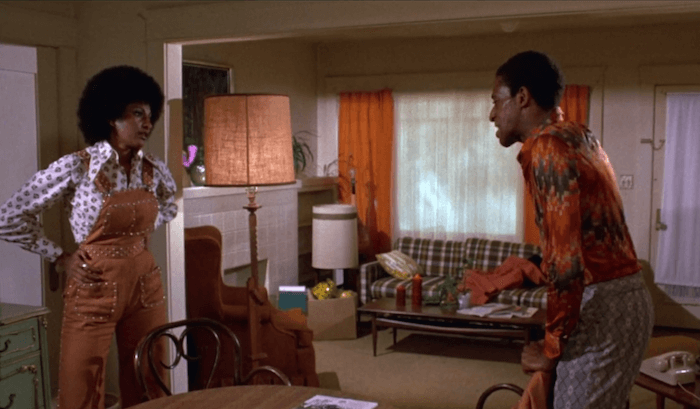

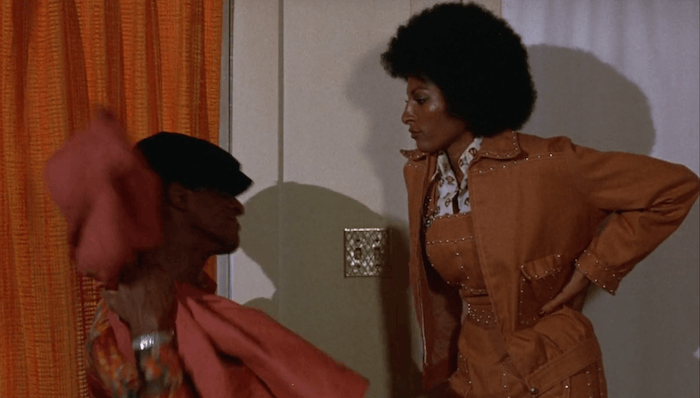

Later in Foxy Brown, she wears yet another brown ensemble. The elements of these outfits aren’t meant to be mixed and match, but worn together.
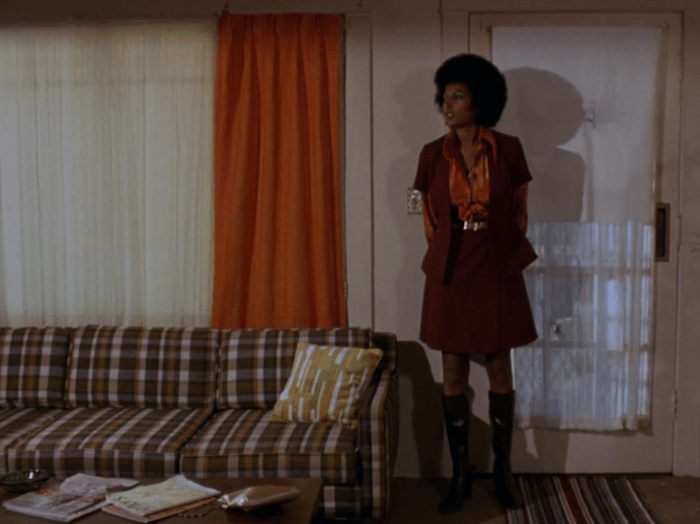

This being the early 1970s, there are many jersey dresses. The dresses are usually more brightly colored than the more conservative ensembles. This light blue gown from Foxy Brown imparts a goddess-like appearance, and a velvety yellow dress, complete with a large cutout, is ideal for obligatory undercover prostitute activity.
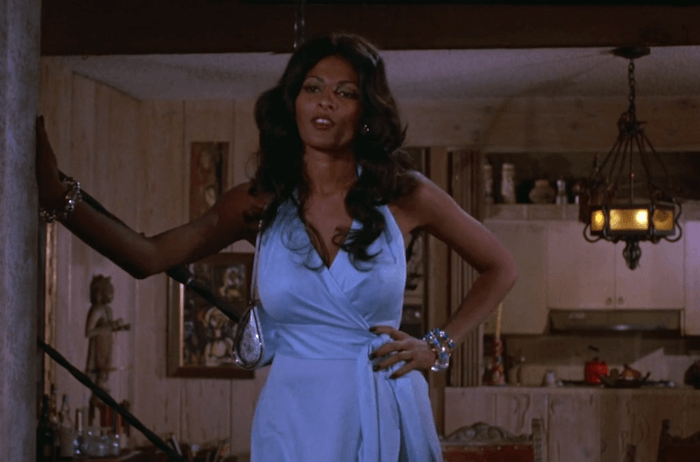

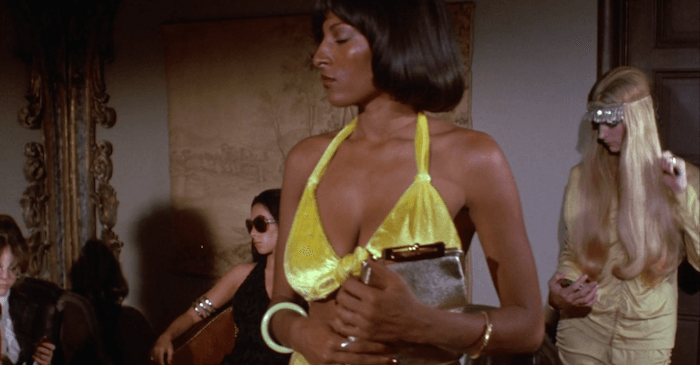

Grier looks good even in uniform. She and her costars spend most of Black Mama, White Mama in prison uniforms that look straight out of American Apparel. The uniform is a yellow dress that barely covers the behind, along with a pinkish-orange jacket, which Grier saucily ties at the waist.


When she first arrives at the prison, she wears a V-neck red dress that recalls the show-stopping jumpsuit she wears in Foxy Brown. The combination of red and low cut is an automatic signifier of sex and power.
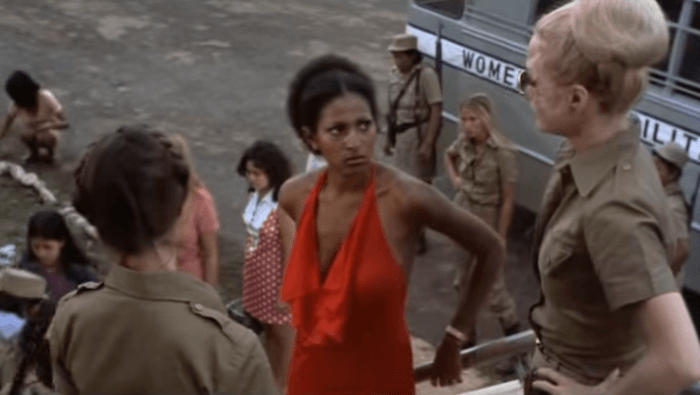

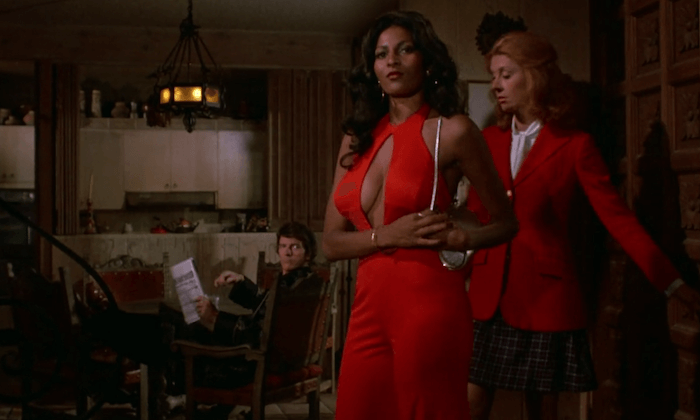

While Grier is always the star of the show, the supporting characters have their own memorable outfits. Coffy features what is, essentially, the platonic ideal of a sleazy 1970s pimp. Grier’s low-cut, drapey dress and seashell necklace here look dramatic and it is hard to imagine any situation, other than a Blaxploitation film, where anyone could pull off one of these two ensembles.
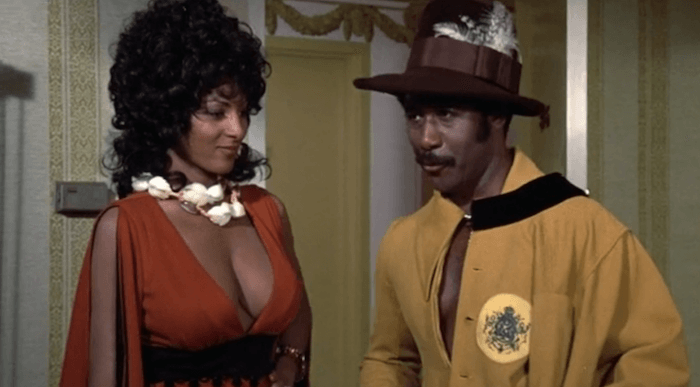

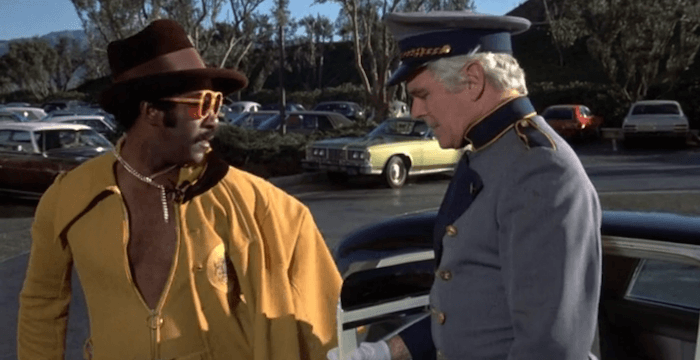

The other prostitutes in Coffy wear long jewel-tone gowns that recall the popular Halston designs of the time. These characters have little in the way of personality besides bitchiness, and their dresses are practically engineered to conveniently expose their breasts during an overwrought catfight scene.
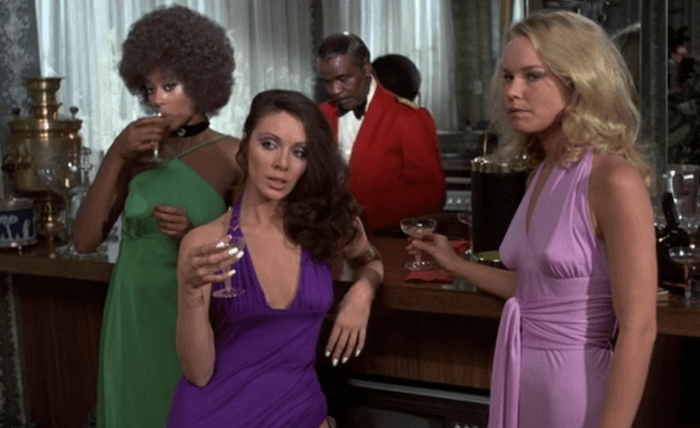

One of Grier’s most famous moments comes when she hides razor blades in her afro and pulls them out during a catfight in Coffy. This scene, merging ferocity, sex, and unapologetic blackness, is the essence of her bombshell appeal. Whether she’s in plaid pants, an absolutely un-virginal white dress, or shades of teal, Pam Grier’s distinct combination of beauty and badass always comes through.
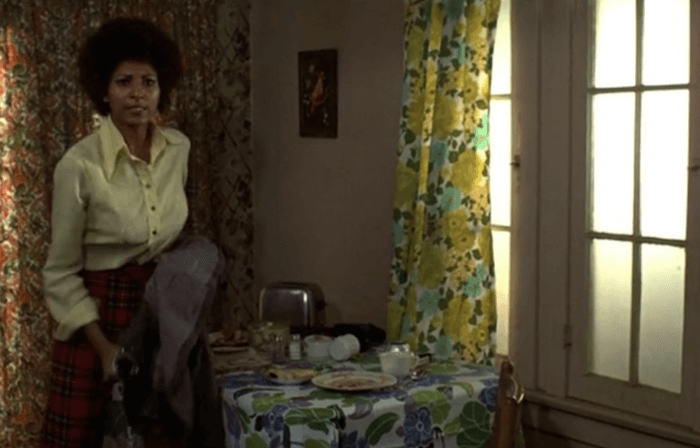

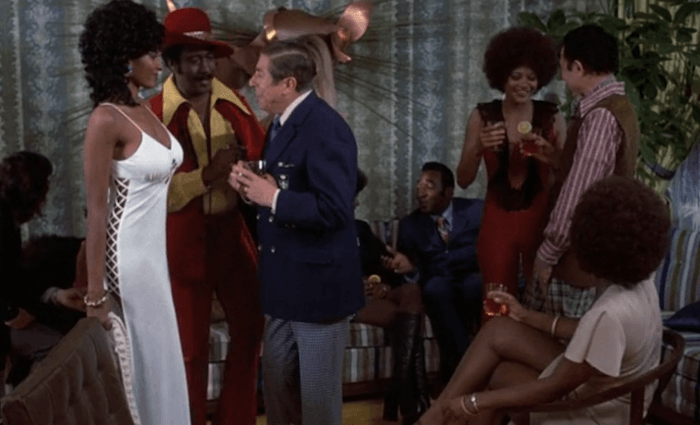

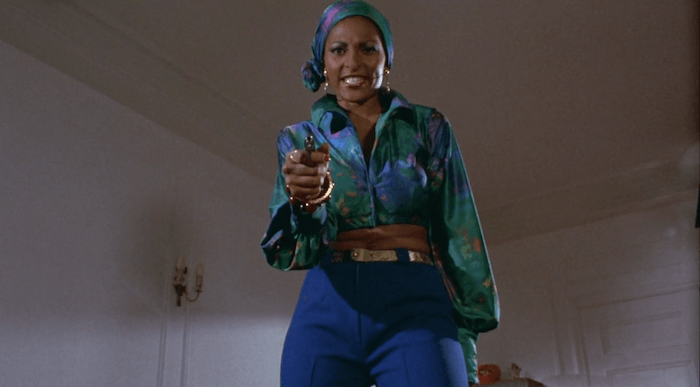

You might also like 



















